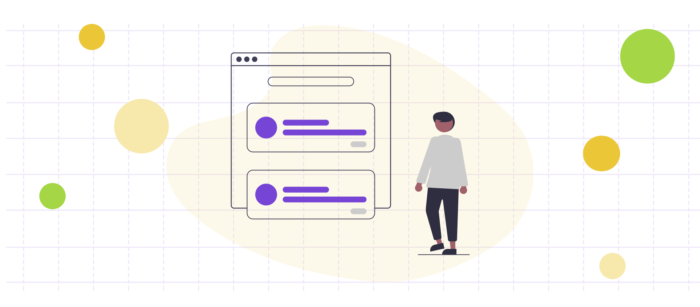Choosing the Right Grant Management System for Your Nonprofit [A Step-by-Step Guide]

You're on a mission. A mission to make a tangible, positive impact on the world. Whether you're fighting for environmental sustainability, championing education, or working towards social justice, your nonprofit is a force for good. But here's the truth: every mission, no matter how noble, requires resources. And that's where grants come in.
Grants have the power to fuel your mission, providing the financial backing needed to turn dreams into reality. They can be the bridge between ideas and action, between potential and progress. But here's the catch: managing grants, while incredibly rewarding, can be a complex labyrinth of paperwork, deadlines, and compliance.
That's why the right Grant Management System (GMS) is nothing short of your nonprofit's secret weapon. It's the compass that guides you through the grant-seeking journey, ensuring you don't just apply for grants, but win them and utilize them effectively.
In this step-by-step guide, we're going to delve into the heart of grant management systems. We'll unravel the complexities, highlight the nuances, and equip you with the knowledge you need to choose the perfect GMS for your nonprofit. So, whether you're a seasoned nonprofit professional or just embarking on this impactful journey, join us as we navigate the world of Grant Management Systems, one strategic step at a time. Let's empower your mission and turn your aspirations into achievements.
What is a Grant Management System?
You might be wondering: what exactly is a Grant Management System (GMS)? Well, think of it as your nonprofit's strategic command center for all things grants. It's a specialized software or platform designed to streamline the entire grant management process, from identifying potential funding opportunities to reporting on the impact of awarded grants.
Manual vs. Automated: Navigating the Grant Management Landscape
Now, you might be familiar with the old-school approach: mountains of paperwork, spreadsheets galore, and email threads that seem to multiply overnight. While these manual methods have served nonprofits for years, they come with their fair share of challenges. Misplaced documents, missed deadlines, and the never-ending search for critical information can turn even the most dedicated grant seeker into a frazzled multitasker.
The Need for Dedicated Systems: Unraveling the Why
But why do nonprofits need a dedicated system? The answer lies in efficiency, accountability, and impact. With the right GMS, you gain the ability to focus more on your mission and less on administrative tasks. You can track progress, generate comprehensive reports, and demonstrate the true impact of your efforts to stakeholders, donors, and the community at large. It's not just a tool; it's a strategic advantage that empowers your nonprofit to operate at its fullest potential.
Benefits of Using a Grant Management System
Now that you have a clear understanding of what a Grant Management System (GMS) is, let's dive into why incorporating one into your nonprofit's operations is a game-changer.
1. Increased Efficiency and Time Savings
Picture this: with a click of a button, you access a comprehensive dashboard that outlines all your ongoing grant applications, their statuses, and upcoming deadlines. No more sifting through piles of paperwork or drowning in spreadsheets. A GMS automates routine tasks, allowing you to allocate your time where it matters most: advancing your mission.
2. Enhanced Transparency and Accountability
With stakeholders and donors increasingly seeking transparency, a GMS becomes your beacon of trust. It creates a transparent record of your grant-related activities, demonstrating a commitment to accountability. You can easily track fund allocation, expenditures, and project milestones, providing a clear view of where every dollar goes.
3. Improved Grant Tracking and Reporting
Gone are the days of manual record-keeping and piecing together fragmented data. A GMS centralizes all grant-related information, enabling you to track progress seamlessly. This means you're better equipped to provide detailed and accurate reports to your funders, showcasing the tangible impact of their support.
4. Reduced Compliance Risks
Noncompliance with grant requirements can be a costly affair, potentially jeopardizing future funding. A GMS acts as a vigilant watchdog, sending reminders for important deadlines and ensuring all necessary documentation is in order. This minimizes the risk of compliance hiccups, safeguarding your organization's reputation and financial stability.
5. Streamlined Communication with Funders and Stakeholders
Effective communication is the lifeblood of any nonprofit. A GMS facilitates seamless interactions with funders, stakeholders, and partners. You can share progress reports, updates, and pertinent documents directly through the platform. This not only fosters stronger relationships but also instills confidence in your organization's ability to execute projects with precision.
Incorporating a Grant Management System into your nonprofit's toolkit isn't just about convenience—it's about revolutionizing the way you approach grants, ensuring that every opportunity is maximized to its fullest potential.
Features to Look for in a Grant Management System
Now that you're convinced of the benefits of a Grant Management System, it's time to explore the essential features that make one stand out. Here's what you should be on the lookout for:
- Overview of Key Features and Functionalities: A robust GMS should offer a comprehensive suite of tools. This includes capabilities for grant tracking, deadline management, reporting, and document storage. Keela's Grant Management software excels in this regard, providing a full spectrum of functionalities to seamlessly manage every aspect of your grants.
- Customization Options: Your nonprofit is unique, with its own set of processes and needs. Look for a GMS that allows for customization. Keela's Grant Management software empowers you to tailor the platform to fit your specific workflows, ensuring it aligns perfectly with your organization's goals and strategies.
- Integration Capabilities with Other Nonprofit Tools: Collaboration and data sharing are crucial in the nonprofit sector. Your chosen GMS should integrate seamlessly with other tools your organization uses, such as CRM systems or accounting software. Keela's Grant Management software boasts robust integration capabilities, enabling a seamless flow of information across your tech stack.
- User-Friendliness for Nonprofit Staff: Adopting new software should be a smooth transition, not a steep learning curve. Keela's Grant Management software is designed with user-friendliness in mind. Its intuitive interface ensures that your staff can hit the ground running, without the need for extensive training or onboarding.
Incorporating Keela's Grant Management software into your nonprofit's operations addresses these key features with precision. From a rich set of features to seamless customization options, robust integration capabilities, and user-friendly design, Keela's software is tailor-made to empower your organization in the pursuit of grants. With Keela, you're not just managing grants; you're optimizing your path to success.
Types of Grant Management Systems
When it comes to selecting a Grant Management System (GMS), understanding the different types available is crucial. Let's explore two primary distinctions: the infrastructure they operate on and the licensing model they use.
On-Premises vs. Cloud-Based Systems
On-Premises:
On-premises systems are hosted locally, within your organization's physical infrastructure. This means you'll be responsible for the maintenance, security, and updates of the system. While this grants you full control over the software, it can be resource-intensive and may not be the most cost-effective option for smaller nonprofits.
- Pros: Full control, ideal for organizations with specific security needs.
- Cons: Higher upfront costs, maintenance-intensive.
Cloud-Based:
Cloud-based systems, on the other hand, operate on remote servers, accessible via the internet. They offer scalability, flexibility, and often come with automatic updates and security measures. Keela's grant management feature falls under this category, providing you with a dynamic, hassle-free solution that allows your organization to focus on what truly matters - your mission.
- Pros: Scalable, accessible from anywhere, automatic updates.
- Cons: Relies on internet connectivity.
Commercial vs. Open-Source Solutions
Commercial Solutions:
Commercial GMS are typically provided by software vendors who charge a licensing fee for their product. These solutions often come with dedicated support, regular updates, and a suite of features tailored for specific needs. While they can be costlier, they can provide a more comprehensive and specialized solution.
- Pros: Comprehensive support, specialized features.
- Cons: Higher cost, potential for vendor lock-in.
Open-Source Solutions:
Open-source GMS are community-driven platforms that are often available for free. They offer a high degree of flexibility and can be customized to suit your organization's unique requirements. However, they may require a higher level of technical expertise to set up and maintain.
- Pros: Highly customizable, often cost-effective.
- Cons: Requires technical expertise, and limited official support.
Understanding these distinctions will help you make an informed decision based on your organization's size, budget, and specific requirements. For those seeking a dynamic, user-friendly solution, Keela's cloud-based grant management system stands out as an excellent choice.
Components of Grant Management in Keela
Now that you understand the types of Grant Management Systems, let's delve into how Keela's tools can be harnessed for each crucial component of grant management.
Storing Grantor Information
In the world of grants, knowing your grantors inside out is essential. With Keela, you can create detailed contact profiles for grantors effortlessly:
- Creating Contact Profiles: Using Keela's intuitive interface, you can swiftly create 'company' contact records for organizations or foundations providing grants.
- Associating Individuals: Link 'individual' contact records with the respective companies to track key relationships and interactions effectively.
- Tagging for Organization: Utilize tags to categorize and manage grantors based on criteria that matter most to your nonprofit. This allows for seamless filtering and targeted communication.
Grantor Correspondence
Maintaining open lines of communication with your grantors is paramount. Keela helps you stay on top of interactions:
- Recording Emails: Keela automatically records emails sent to grantors in the contact's Interactions tab, ensuring a detailed history of correspondence.
- BCC/FWD Emails: For emails sent outside of Keela, simply BCC or forward them to your Keela account to keep everything centralized.
- Manual Interactions: Easily add other interactions like phone calls and meetings for a comprehensive record of all communications.
- Setting To-Do Reminders: Never miss an opportunity to follow up or check-in with grantors by creating To-Do reminders within Keela.
Grant Tracking
The heart of grant management lies in tracking the progress of each grant. Keela's Projects Tool is your ally:
- Individual Projects: Create a dedicated project for each grant to monitor the progress of your application, from submission to approval.
- Task Management: Within each project, manage tasks and deadlines to ensure all requirements are met in a timely manner.
- Reporting Due Dates: Track reporting due dates and easily upload the necessary files directly to the project for easy access.
- Collaboration Hub: Foster team collaboration through the chat feature within projects, ensuring everyone is on the same page.
Visual Learning
For visual learners, Keela offers a wealth of resources:
- Step-by-Step Guides: Access visual resources and step-by-step guides to maximize your proficiency in using Keela's grant management tools.
We encourage you to explore Keela's extensive library of resources. Downloading our guides can significantly enhance your proficiency in utilizing the platform's grant management capabilities.
Conclusion
In this comprehensive guide, we've journeyed through the essential components of grants management. From storing grantor information to seamless grant tracking, each step is vital in securing and maximizing your grant funding.
But here's the key takeaway: having the right grant management software system is paramount. It's the linchpin that turns your grant aspirations into realized impact. And when it comes to choosing the best grant management software, Keela stands out as a game-changer for nonprofits.
Keela's grant management feature offers a powerful, cloud-based solution that empowers you at every stage of the grant process. It streamlines communication, tracks progress, and ensures compliance, all within an intuitive and user-friendly platform. With Keela, you're not just managing grants; you're unlocking a new level of efficiency and effectiveness in your grant-seeking endeavors.
The value of Keela's grant management feature cannot be overstated. It's not just a tool; it's a strategic ally in your mission to secure funding and make a tangible impact in your community.
So, whether you're navigating a diverse range of funding programs or seeking a seamless online application management solution, Keela has you covered. Don't miss out on the opportunity to leverage this powerful functionality for your grant management needs.
Empower your nonprofit today with Keela's grant management software system, and take the next step towards securing the funding you need to drive your mission forward.
Unlock the potential of nonprofit grant management software to streamline applications and empower your organization to maximize funding opportunities. Talk to a Keela Fundraising Expert.
.svg)



